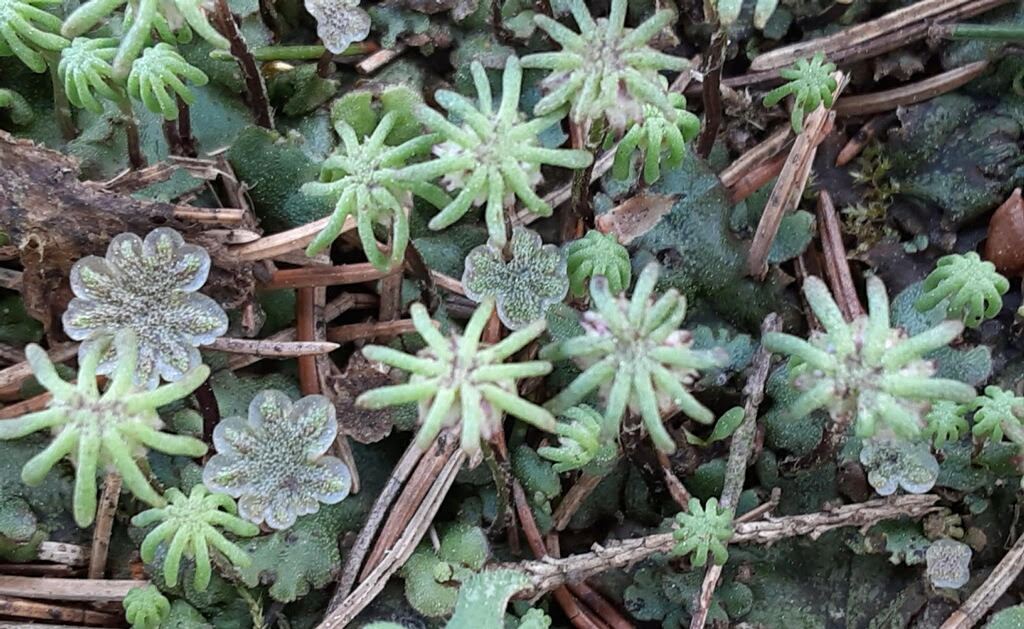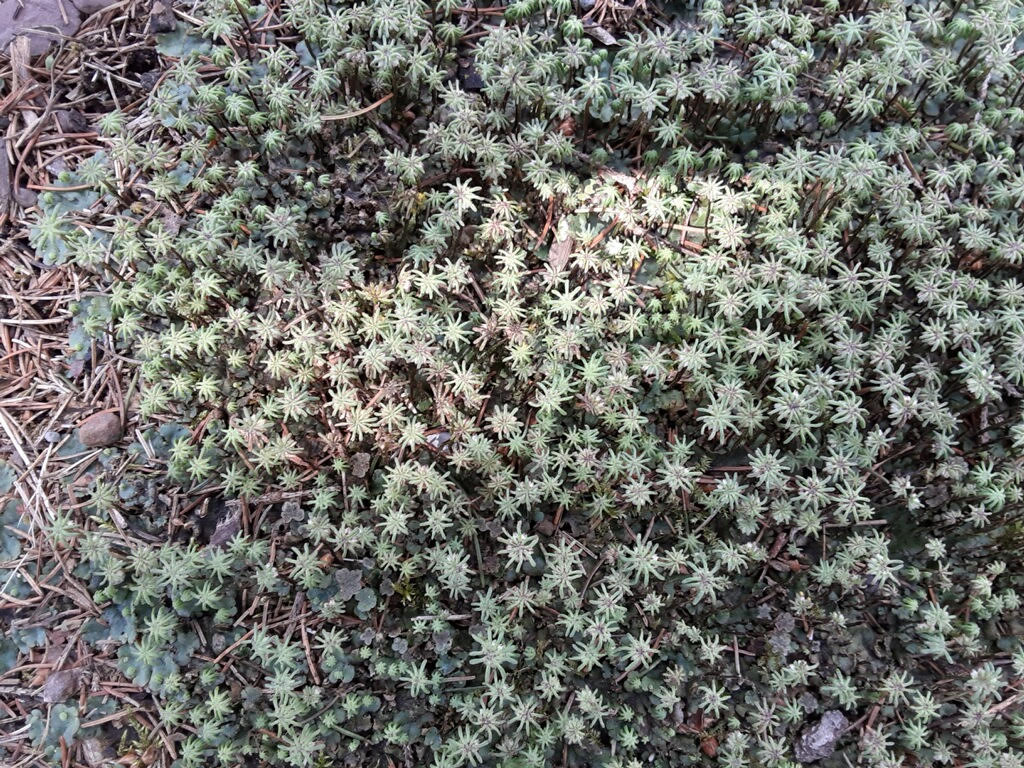By, Susan Sprout
The family Marchantiaceae contains a single genus and a single species which in turn has diverged into three sub-species. Marchantia polymorpha is the one I’d like to share with you – another cool and unusual plant growing in PA! Marchantia is a member of a whole group of plants known as Bryophytes which include mosses, hornworts, and liverworts. All are non-vascular land plants because they don’t have veins or tubes like xylem and phloem to carry water and minerals around their bodies. Consequently they are not able to grow as tall as most vascular plants. Marchantia is a liverwort. Someone somewhere probably thought it resembled the lobes of a green liver creeping along the ground. It has been growing on earth since the Cretaceous Era – going back about 252 million years. Because of its age and sustainability, it has been used for over 200 years as a model organism in the investigation of land plant evolution and the development of basic cell mechanisms. Its use has been revived as a modern model plant in order to study plant genetics and evolutionary processes using its DNA.

Marchantia’s thallus, or body, is held tight to the soil by single-celled, root-like structures called rhizoids which absorb water and nutrients. In fact, the whole thallus is like a thirsty sponge that pulls in water flowing over it and dust settling on it right into its body by the process of osmosis. That would be like you, putting your hand on a plate full of food and absorbing all of its nourishment through your skin into your body! The plant then uses the chlorophyll in its body to make food from the water and mineral nutrients.

Another amazing characteristic of Marchantia are the little cups, or gemmae, scattered across its upper surface. Sections of the plant having them can break off, usually at a fork, and start growing a new thallus. Marchantia can also reproduce sexually with the development of male and female plant parts. Here’s where it got a common name of Umbrella Liverwort – the male reproductive structures look like tiny, scalloped umbrellas! The female reproductive structures resemble very small palm trees. Water is then required, in drips, drops, and splashes from rain or nearby waterfalls, or streams. It is needed to wash the male and female gametes formed inside the umbrellas and palm trees together for the creation of new plants. (Is this too much like “the stork delivering a baby” story?)

Marchantia is a cosmopolitan species, occurring from tropical forests to the Arctic tundra. It seems to have a tolerance for lead and may be an indicator of high lead concentrations where it grows. Mats of liverworts growing on land after forest fires can help fight soil erosion. I guess the name “Palm Tree Liverwort” would make this short plant seem too tall. Hmm?


